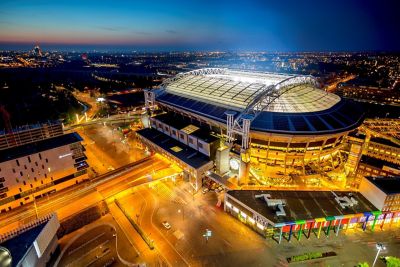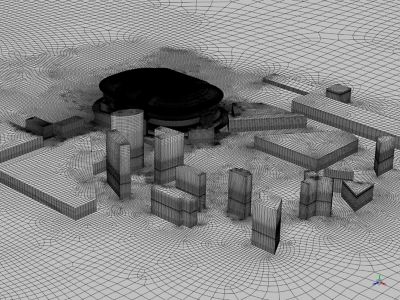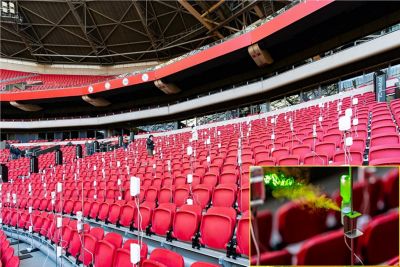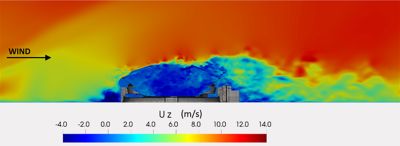-
-
Kostenlose Software für Studierende
Ansys unterstützt die nächste Generation von Ingenieur*innen
Studenten erhalten kostenlosen Zugang zu erstklassiger Simulationssoftware.
-
Verbinden Sie sich jetzt mit Ansys!
Gestalten Sie Ihre Zukunft
Stellen Sie eine Verbindung mit Ansys her, um zu erfahren, wie Simulation Ihren nächsten Durchbruch vorantreiben kann.
Länder und Regionen
Kostenlose Demoversionen
Produkte & Dienstleistungen
Lernportal
Über das Unternehmen
Back
Produkte & Dienstleistungen
Back
Lernportal
Ansys unterstützt die nächste Generation von Ingenieur*innen
Studenten erhalten kostenlosen Zugang zu erstklassiger Simulationssoftware.
Back
Über das Unternehmen
Gestalten Sie Ihre Zukunft
Stellen Sie eine Verbindung mit Ansys her, um zu erfahren, wie Simulation Ihren nächsten Durchbruch vorantreiben kann.
Kostenlose Demoversionen
ANSYS BLOG
July 22, 2022
What Have We Learned to Prevent Closing Stadiums Because of COVID?
As we watch an increase of new COVID-19 cases, a concern is emerging: Will we be confined again? Will we need to maintain social distancing and wear a mask? Will concerts and sporting events be canceled? This would be a disaster for the sports industry and a major blow for fans.
During the last two years, many leading organizations have used simulations to understand the propagation of aerosols under different circumstances and the risk of contamination. Among them, Professor Bert Blocken’s team at TU Eindhoven and KU Leuven have published widely read studies modeling aerosol propagation while people are running, jogging, or exercising in a fitness room. These studies suggest valuable precautions to minimize the risk of being exposed to COVID.
As experts in computational fluid dynamics (CFD), we know that tools like Ansys Fluent can model the dispersion and evolution of COVID-contaminated droplets exhaled by people under various thermal and moisture conditions. However, we also know the difficulty of modeling the flow of tiny droplets — less than 100 micrometers in diameter — in a large stadium.

The Johan Cruijff ArenA stadium in the Netherlands. Copyright Johan Cruijff ArenA
The numerical challenges and necessary computational time exceed what most engineering teams have available to them with their existing compute power. Yet, it is very important to predict the motion and concentration of these aerosols in the stadium and the subsequent risks of contamination based upon the wind direction and speed, both of which lead to complex airflow patterns. This predication capability could help authorities make the decision to proceed with or cancel a game due to the risks for spectators and athletes.

A very fine mesh of the stadium and its surroundings was generated to capture aerosols movements.
Could they demonstrate, with enough accuracy and reliability, that natural ventilation or major ventilation systems could push most of the potentially contaminated aerosols away from the crowd and the athletes and out of the stadium? Would it be possible to consider combining weather forecasts with precomputed airflow models in the stadium so that authorities could reliably decide in advance whether the game could safely take place?
Over the past 18 months, Blocken’s team has been working hard to answer these questions and overcome the simulation and compute challenges. This ambitious simulation project was conducted in close collaboration with the Johan Cruijff ArenA, PlasmaMade, Sportinnovator, and Health-Holland. Using the geometries of the Johan Cruijff national football arena in the Netherlands, the team built a detailed model of the stadium and its surroundings. They have collected experimental data for validations by running large, real-world measurement campaigns, both with artificial aerosol generators in the stadium and by taking measurements during an actual game with spectators present.

Artificially generated aerosols were used to validate the computer models.
They have also modeled the complex airflow pattern, including the dispersion of aerosols, using Fluent for CFD and Ansys Cloud for the compute power, which enabled them to tap into the powerful cloud compute strength provided by Microsoft Azure. Blocken’s team ran these large simulations for different wind directions, wind intensities, and air temperatures. Finally, they modeled the impact of major ventilation systems. Combining weather forecasts with their models, it is now possible to predict, with a good level of confidence, if there is a serious risk of aerosol contamination in the stadium.

Streamwise velocity component in vertical cross-section through stadium.
The detailed results of this project will be shared in the fall in science journals, press releases, and news articles, but we are now able to share the short video below as an exciting preview of the results. Watch it to learn how Blocken’s team has developed methods that could reduce the risk of canceling games or closing stadiums. See why fans can be hopeful that they will be able to cheer on their teams in a safe environment when the new season starts. And, if you are a stadium administrator, you can contact us to understand how this technology could be applied to your stadium.